Welp, halfway through the season. I’ve loved, I’ve lost, I’ve found new favorites and forfeit significant respect for old ones. Overall, this season easily eclipses the last three in terms of purely watchable shows, though its top tier is fairly similar in size to last season’s. But then again, that “watchability” level might just be a sign of my entertainment standards dipping, so I guess I have nothing valuable to tell you! On that note, let’s run down the list.
#1: Kyousogiga
Easily my top pick for the season so far, and it’s not even close to a contest. The writing, the direction, the visual design, the sound design… it has every other show I’m watching beaten in every single category. The world is rich, evocative, and beautiful, the themes are poignant and well-layered into the narrative, the characters are relatable, distinctive, and dynamic, and each episode is speckled with moments and sequences that just leave me in awe. The montage used for the OP in episode one. Koto’s nighttime walk in two. Yase’s tree in four. Koto and Myoe running through the fields in five. So many powerful, beautiful moments, and all of them supported by such a stunning consistency of craft and creativity. It’s hard to single out any single element from something like this, but I think the direction does deserve particular notice – it’s quirky and smart and assured in a way that displays great personality and mastery of mood, but always works in service of the storytelling. We don’t get very many shows of this caliber (two this year, I’d say – this one and Eccentric Family), and so I consider every one a gift. Apparently we’re just now heading into territory uncharted by the earlier OVAs, but I’m more excited than worried – all of the formal elements have been so impressive so far that I have total faith in this team. This is a director to watch out for.
#2: Kill la Kill
Kill la Kill is, unsurprisingly, a war of extremes. On the negative side, so far I’m very unconvinced by its politics. If it wanted to make a statement about identity and taking control of your image, that’d be sweet – but it’s clearly also dedicated to traditional fanservice in the “leering camera angles and ridiculous costumes” school, and piles on some absurd rape jokes with that. On the positive side, goddamn does this show know what it’s doing. The direction is ridiculously dynamic, the art design is extremely distinctive, the music is great, the energy is high, the pacing is as breakneck as it should be, and its goofy sense of fun is strong and infectious. It’s strongly western-influenced while also unabashedly anime, the characters all pop off the screen, the colors and lighting and shot composition are all phenomenal, and its underlying narrative is gleefully over the top in a way that doesn’t make me disengage, but instead actively wonder what they could possibly do next. This show certainly has some problematic elements, and I wouldn’t fault anyone for leaving it at that. But there is also a lot of greatness here, and I have a ton of fun every single episode. This is capital-E Entertainment.
#3: White Album 2
Like the mythical unicorn, that rarest of shows, the Actually Good Romance, has reared its head to once more shower us with drama and feelings. There’s almost nothing to fault in this show, and the things I would specifically praise are the things most critical to any romance – the characters and the dialogue. As far as characters go, our principle three are all well-layered people, each with distinctive personalities, goals, mannerisms, and weaknesses. Setsuna generally gets the most attention by virtue of being the most aggressive mover of the plot, but I find Haruki even more interesting – I can see why the other characters find him compelling, but he is not necessarily a good person. He’s confident but clearly manipulative, and tends to downplay his own agency in a way that seems more practiced than humble. In fact, all three of these characters already seem like they’re dancing around the others’ known feelings, and letting the pleasant surface level of their friendship and the overt goal of the concert keep everything civil. Their conversations are rich both on a personality-infused level and on a subtext-driven one, and the pacing’s slow build works perfectly for the kind of dance these characters are performing. It’s an impressive show, and I’m eager to see where it goes.
#4: Monogatari S2
Still keeping it together. This arc has been by far the weakest of the second season, relying largely on Isin’s weak comedy and weakest characters (Araragi and Mayoi). But that doesn’t diminish the glory of Nadeko Medusa, which was clearly one of the standout arcs of the series so far. The well-used unreliable narration, the array of clever, purposeful visual tricks (the background specters, the panic-attack moments, the spotlight), and its various standout moments (Nadeko says No, Nadeko triumphant) all contributed to an arc that clearly showed off the series at its twisted, circuitous, visually arresting best. Hopefully the next arc will see the focus shifting off Araragi once more, so we can finish this generally stellar set of episodes in style.
#5: Samurai Flamenco
This show makes me giddy pretty much every week – it’s that rare anime comedy that just always lands for me. Which I think is a result of a bunch of elements, so I’ll try to run a few down. First, it’s just grounded enough for punchlines and physical gags to actually have some bite to them – most of its scenes actually help ground the world in a very physical, believable space, and so when things get silly, it’s actually a punchline, not just a silly gag in a series of silly gags. The characters are actually well-defined, and their silliness emerges from believable emotional places and desires, so again, it’s not just a series of insane things happening. It’s not just a comedy – the narrative is actually entertaining in its own right, the characters are clearly going places, and it actually toys with some real ideas (though lately those ideas have clearly been secondary to the humor). And it keeps changing up its variables, too – Red Axe and Flamenco Girl each offer both a very different dimension to the show and a very specific brand of humor, Red Axe with his great, earnest camp and Flamenco Girl with her abiding love of violence. And all this rides on the fact that it actually understands comic timing so very well – it knows when to draw a gag out, it knows when to quickly jump the narrative, and it knows when to have Flamenco Girl run back for just one more kick to the nuts. This show is good times.
#6: Nagi no Asukara
Nagi no Asukara is an extremely solid show – in fact, were this season less stacked, this might be the show I never stop going on about. Hikari in particular, and the characters in general, are just very smartly portrayed. The way they depict his adolescent war of desires, instincts, and growing maturity is phenomenal, and both the larger societal conflict and smaller emotional ones provide a perfect backdrop to this careful coming-of-age story. Neither of those conflicts are shortchanged, either – the issues of racism and cultural erosion flow beautifully into the smaller questions of family, sacrifice, and letting go.
Speaking of beautiful, holy crap is this show pretty – both the sea and surface are littered with gorgeous backgrounds and lovingly designed environments. If I have any fear for this show, it’d be that the poignancy of the setup might end up wasted on standard dramatic beats – but that’s predicting a negative turn the show has given me very few reasons to expect. Nagi no Asukara is great and I hope it stays that way.
#7: Kyoukai no Kanata
This show makes me kind of sad. I mean, it’s certainly watchable, and I actually enjoy every episode. But… I mean, this is the studio that made Hyouka! That made Disappearance of Haruhi Suzumiya! I know they can make great things, I know they aren’t just capable of making derpy moe comedies… they could have made this work! But…
I guess it always comes back to the writing. Their most consistent strengths are their understanding of comedic timing and animation/visual design – when it comes to writing, apparently strong source material is all that can keep them from flailing (although I personally thought Chuunibyou was great all the way through, so). And flailing is certainly a fine way to describe what’s going on here – some witty dialogue, a very nicely defined fantasy world, some compelling horror imagery/direction and action scenes… and then a bunch of moe gags and slice of life scenes. With the glue that’s supposed to somehow tie these things together, the characters, actually being the weakest element. It’s certainly pretty, and the comedy parts are actually solid (as they always are with KyoAni – even Free, which I thought was far worse than this show, had a bunch of solid gags), and even the action scenes work in the abstract. But there’s just not enough to hang it on.
I got back into anime just as KyoAni was coming off a sequence of shows I had no interest in, and entering a sequence of shows I found fantastic. I thought that was a trend, but at this point, I’m guessing last year was pretty much a fluke. At least we still get stuff like last week’s ridiculous, hilarious nonsense.
#8: Log Horizon
This is one of the most reliably watchable shows I’ve seen in a while. The characters are solid and bounce off each other well, the world is well-portrayed and full of interesting details, the integration of gaming elements actually feels both natural and dramatically satisfying, and the narrative moves confidently from one issue to the next, slowly growing in scope all the while. I’m a sucker for chessmaster-style characters, and Shiroe’s definitely a good one, with his reservations about leadership and issues socializing actually humanizing him even as he carries out his schemes. If I could fault this show for anything (writing-wise – the aesthetics are only serviceable throughout), it might be a lack of ambition. Currently, it hasn’t really striven for much thematic weight or emotional resonance, and has contented itself to be an almost purely entertaining adventure with some clever details here and there. But I’m only really raising that complaint because it’s doing the stuff it’s trying to do well enough that I find myself asking for more, and considering the author, the fact that we’re now moving into larger issues of society definitely improves the substance forecast. It’s too vanilla in direction, aesthetic, and plotting to reach the top tier of entertainment, but it’s reliable entertainment nonetheless.
#9: Outbreak Company
Two episodes ago, I’d have labeled this my surprise hit of the season. The premise seemed utterly ridiculous, clearly indicating some kind of otaku-pandering harem thing designed to coddle you for your media preferences. But then people wouldn’t stop yammering about having to watch it, and so I gave it a chance – and yeah, it was surprisingly great. First, as far as otaku-pandering harem things go, this one actually has a sense of comedic timing and, more importantly, understatement. It doesn’t oversell jokes – in fact, it often barely sells them at all. People simply say funny things, or listen politely to a ridiculous statement and then change the subject, or the camera simply jumps to a character for a comic moment and then back. I can’t overstate how refreshing this is – I see very few anime comedies that understand the art of restraint, and this show pulls it off seemingly without effort.
That alone would make the show… well, almost watchable. But more importantly, this show seemed to take a premise predicated on lauding the Otaku Way and actually make it a story about cultural imperialism. That’s brilliant! I can’t think of a better takedown of either of these concepts – how better to illustrate the folly of assuming your cultural values are universal than to define those values according to arbitrary otaku nonsense? That’s the kind of cynical satire I would want to write (I say, assuming my non-otaku values are superioOH SHIT THEY’VE GOT ME).
Unfortunately, the show seems to have gone in a direction common to many light novel adaptations – the first book offers a legitimately compelling premise and begins to actually explore it, and then holy crap we made some money better shit out some standard adventures. That issue sank Hataraku Maou-sama, and it’s looking like it will sink this show as well. But still, the fate of this one remains to be seen.
#10: Yozakura Quartet: Hana no Uta
This show kinda seems like what people raised on early-2000s shounens would expect anime to be around this time. Wacky fantasy action, random outbursts of legitimately impressive animation, and occasional panty shots. It’s a messy show, and I was very ready to drop it at four episodes, but the last two episodes of pure action have… well, they’ve at least distracted me. When it slows down, it gets pretty bad – the world is arbitrary (often to the point of immersion-breaking ridiculousness, like this world’s fairly questionable mayoral system), the antagonists are arbitrary, and there are too many superfluous characters and random fantasy rules to keep enough focus on the actually decent core relationships. When it speeds up, it provides fairly satisfying sound and fury. It’s a nonsense show, but if you’re up for some nonsense, it can definitely string an action sequence together.
#11: Golden Time
So far, this show has been a disappointing mess. I’ve staggered through because Toradora pedigree and all, but it’s never been easy. The characters are the first problem – none of them are likable, which is fine (though more of a problem in a romance than it would be in other genres, since you kind of have to understand what characters see in each other to believe in a romance, and I think none of these people deserve love), but none of them are even interesting either, which is less fine. Koko has been largely defined by her obsessive craziness, and is one of the least sympathetic leads I’ve ever seen. Tada Banri has managed the neat trick of having a narrative-justified non-personality, which is cute, but does not make him interesting as a person. Nobody else has been developed enough to be a person, though I guess Mitsuo has actually done all right for himself. The show’s most recent turn has actually given me some hope as far as characters go, because it seems like the show might understand Banri and Koko shouldn’t be anywhere near a relationship until they figure their shit out, and so tossing them into an unhealthy, mutually-using relationship promises some possibly interesting drama. Maybe I just want likable characters in my romances. I dunno.
My other big problem with this show, and I guess my central one, is that this is the most aggressively bad direction I’ve ever seen. There is no life to anything in this show – it’s less energetically shot than a multi-camera sitcom, which is not where you want to be in a medium where you get to use any camera angle you want whenever you want to. But no, it’s all neutral mid-distance shots on an even plane with no energetic choices or dynamic shifts whatsoever. And the bad direction goes beyond that – the limp jokes are overplayed, the pacing is bad, the mood is almost always neutral. The show makes essentially no use of its medium, and might as well be a Lifetime Original Movie or something.
This doesn’t even go into more obvious aesthetic flaws, such as the tin-eared sound design (do they just not check the sound levels?) or defiant lack of animation. Overall, this has easily been my biggest disappointment of the season.
Aaand… I think that covers it? Still watching Hunter x Hunter 2011, of course – if I were to rank that, it’d be right around the White Album 2/Monogatari area, aka I friggin’ love it. But anyway. Quite a season! A few shows I love, a good number I enjoy, and a couple I’m watching because it’s better than awaiting a slow death by consumption. That’s a very good ratio!

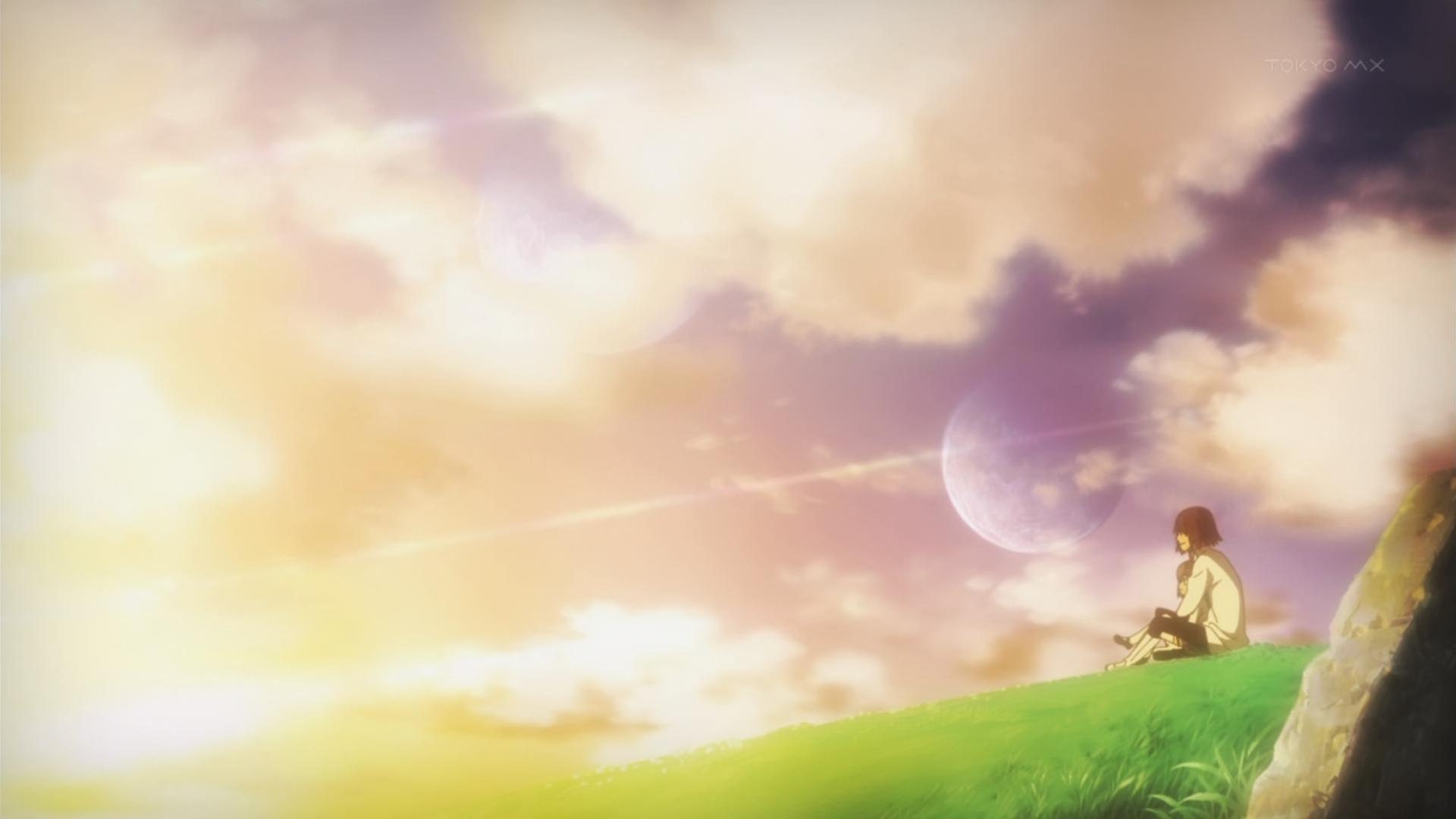
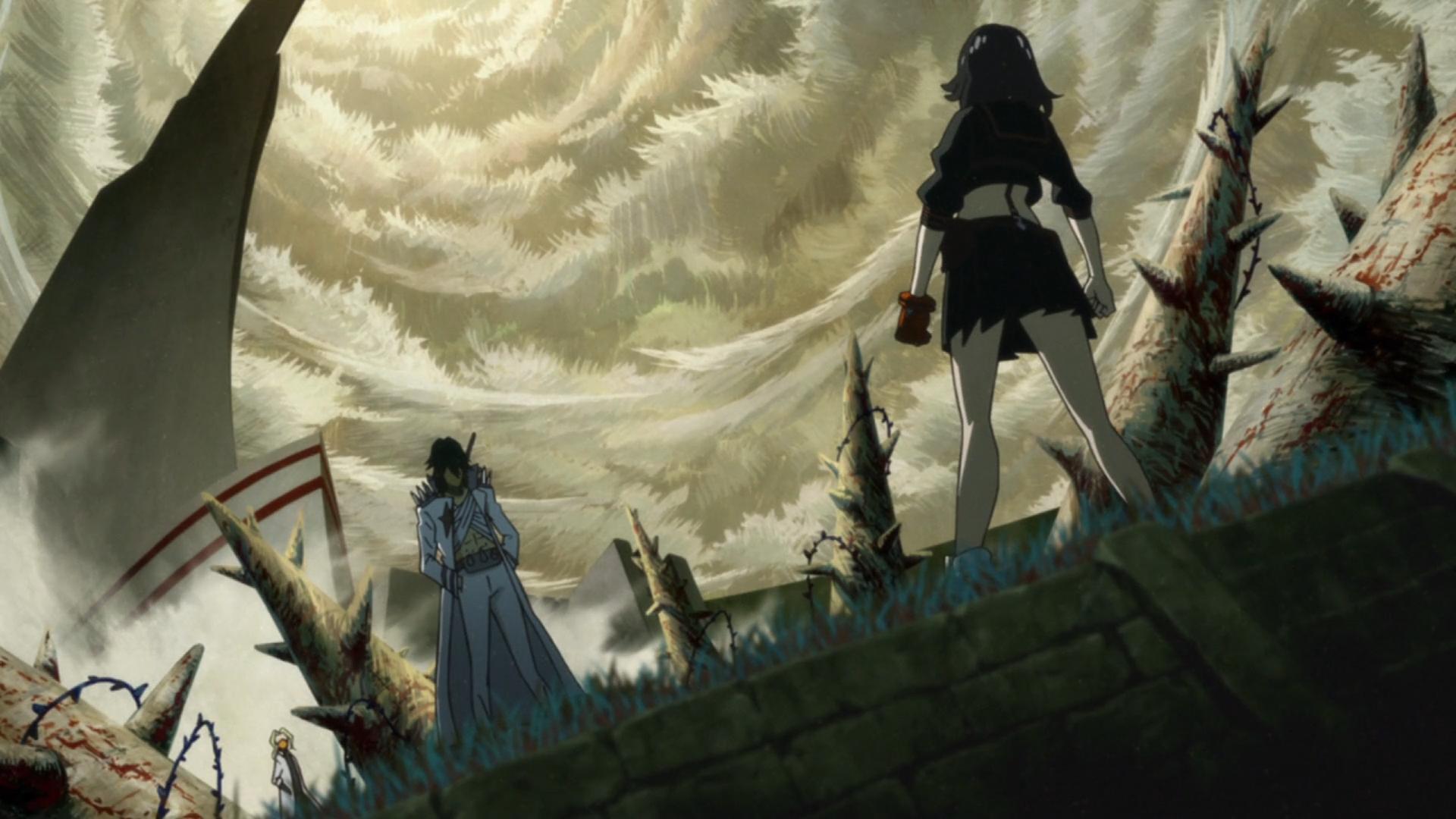
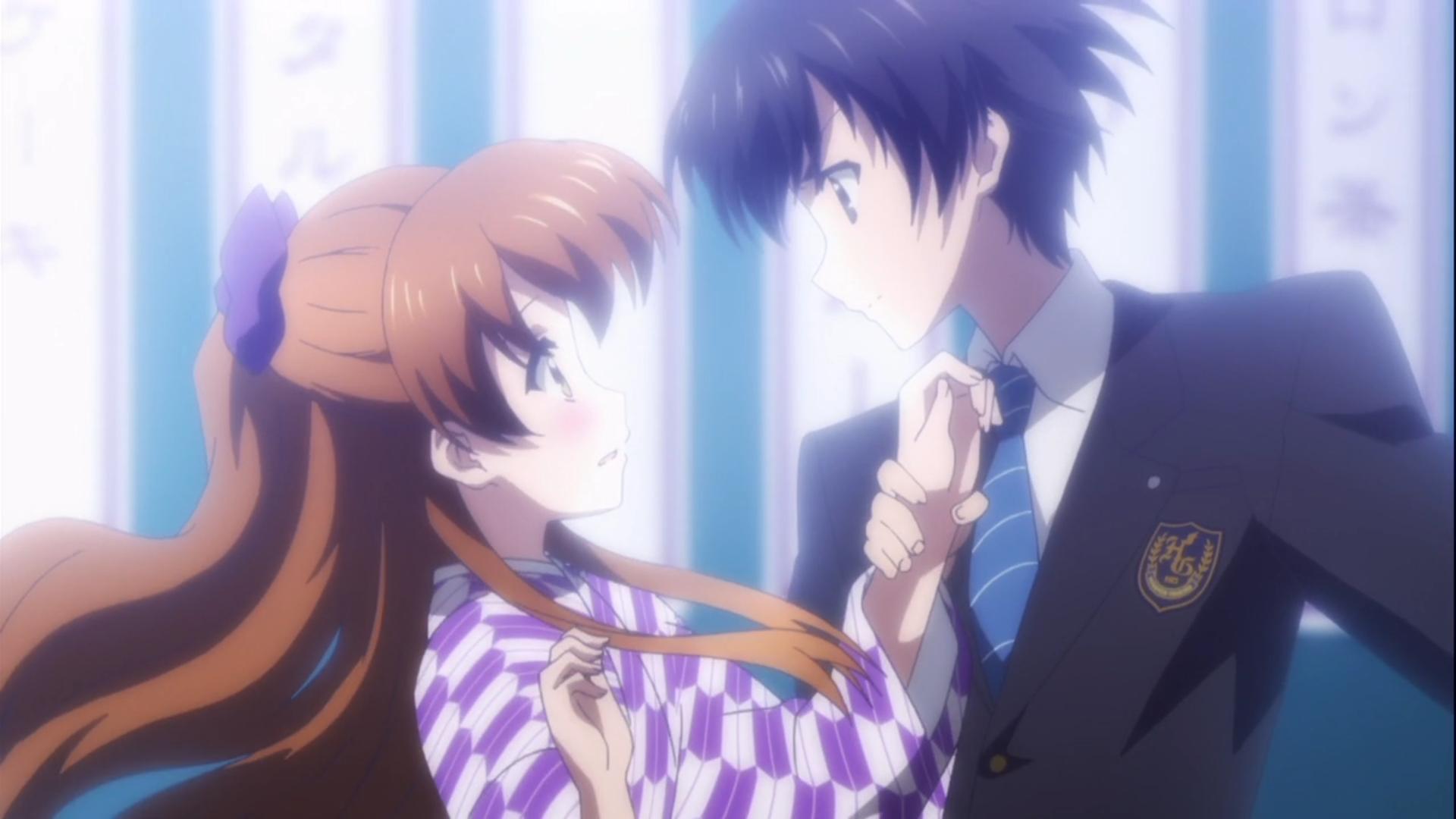
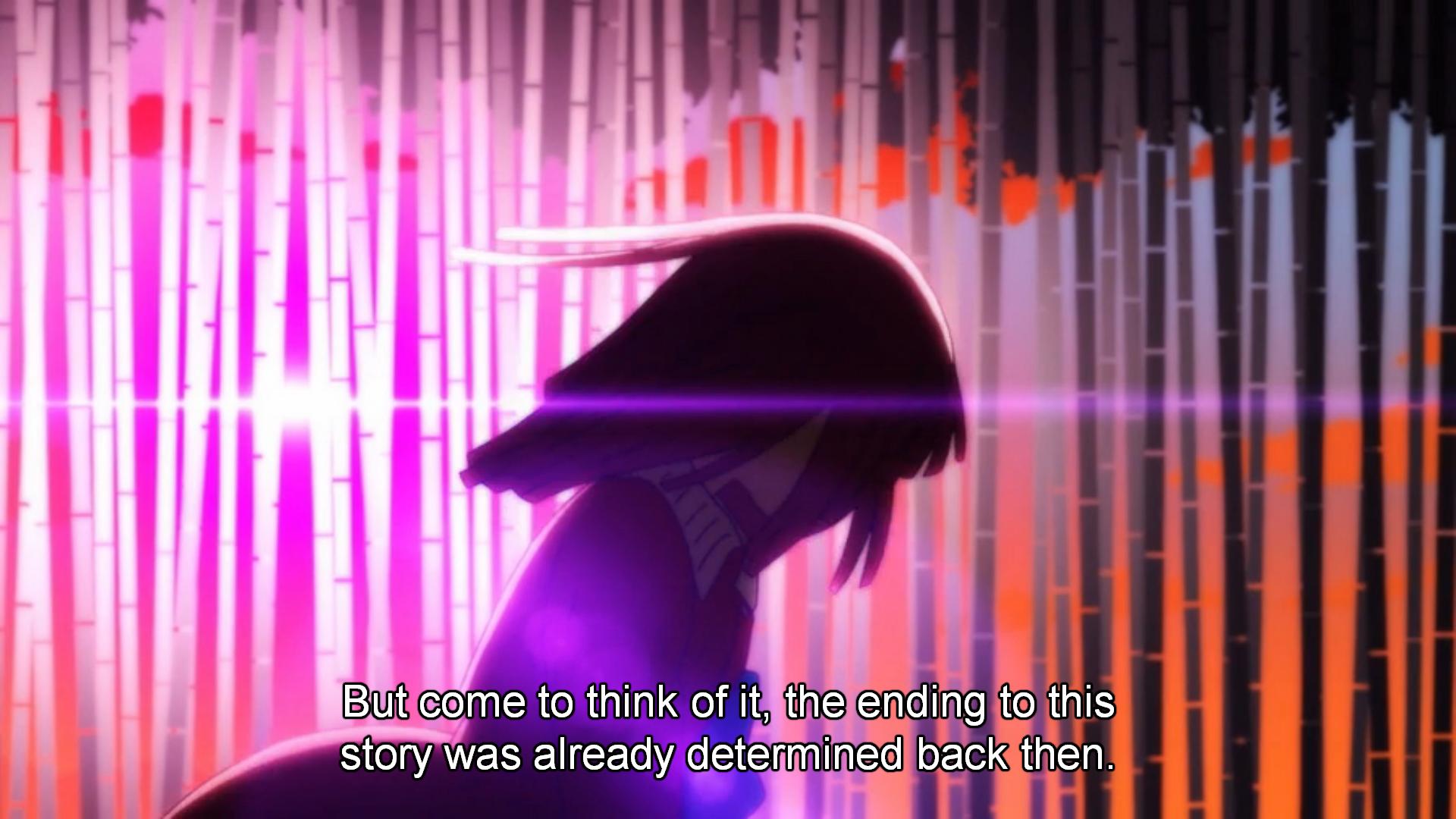
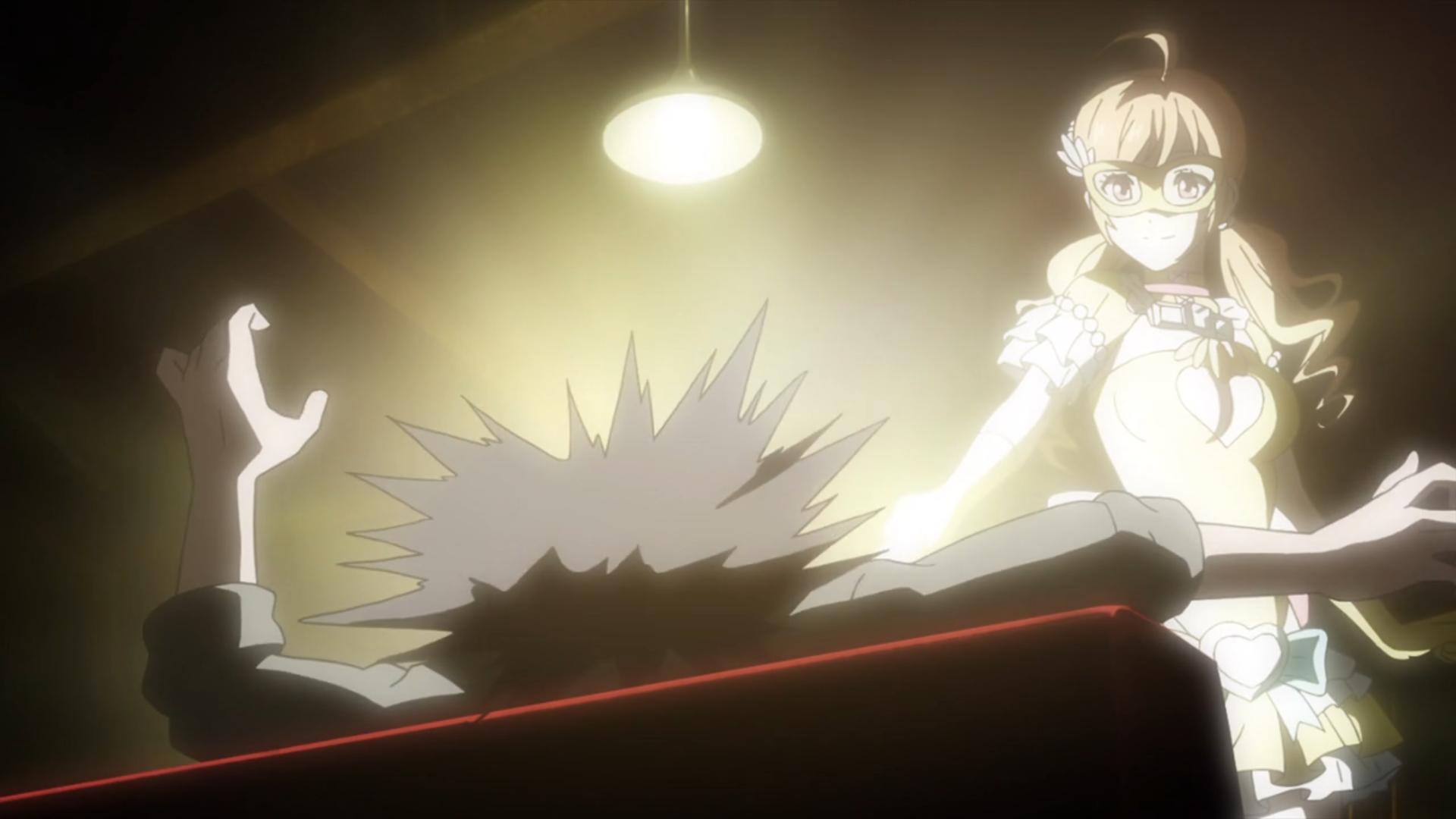
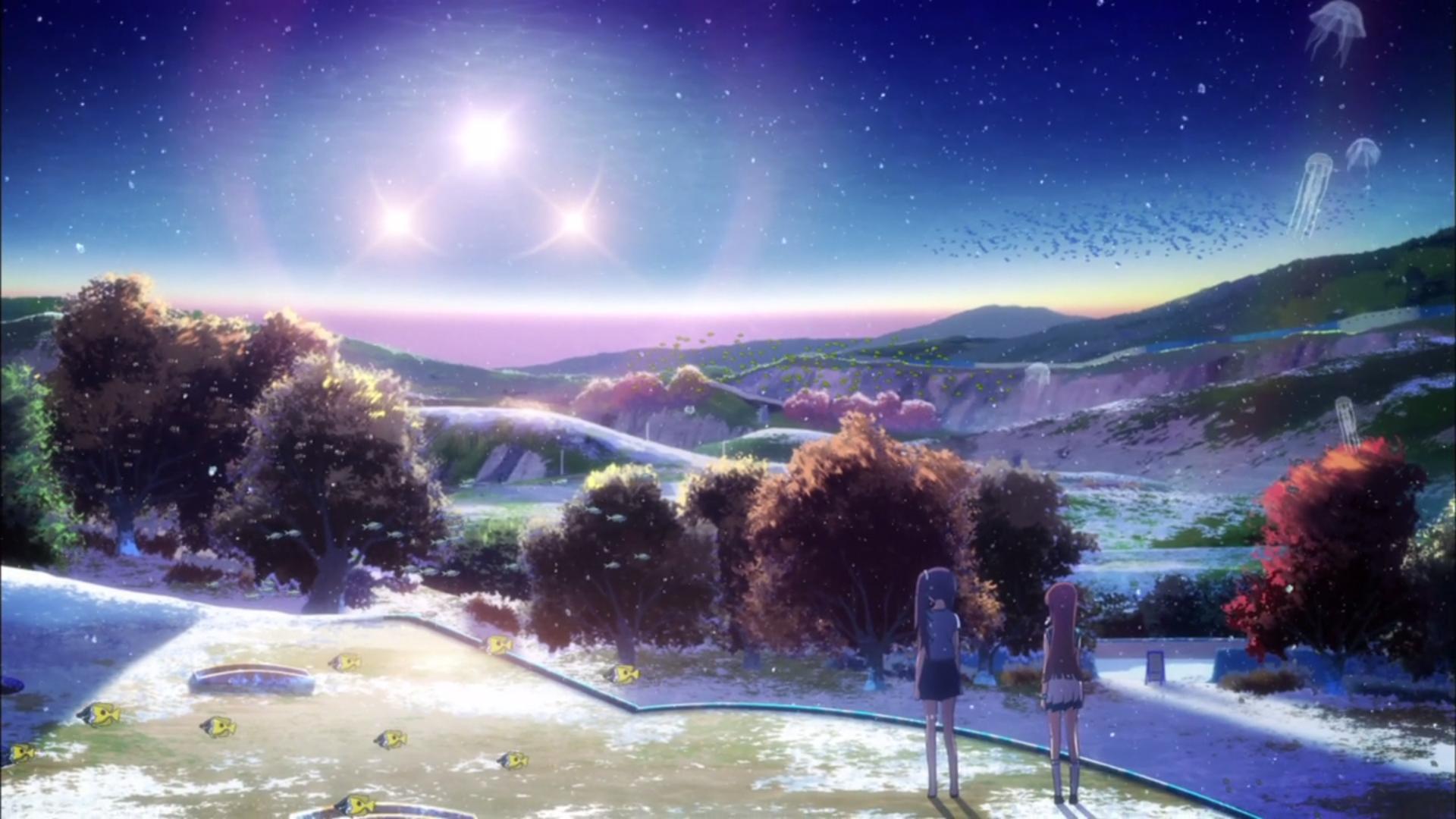
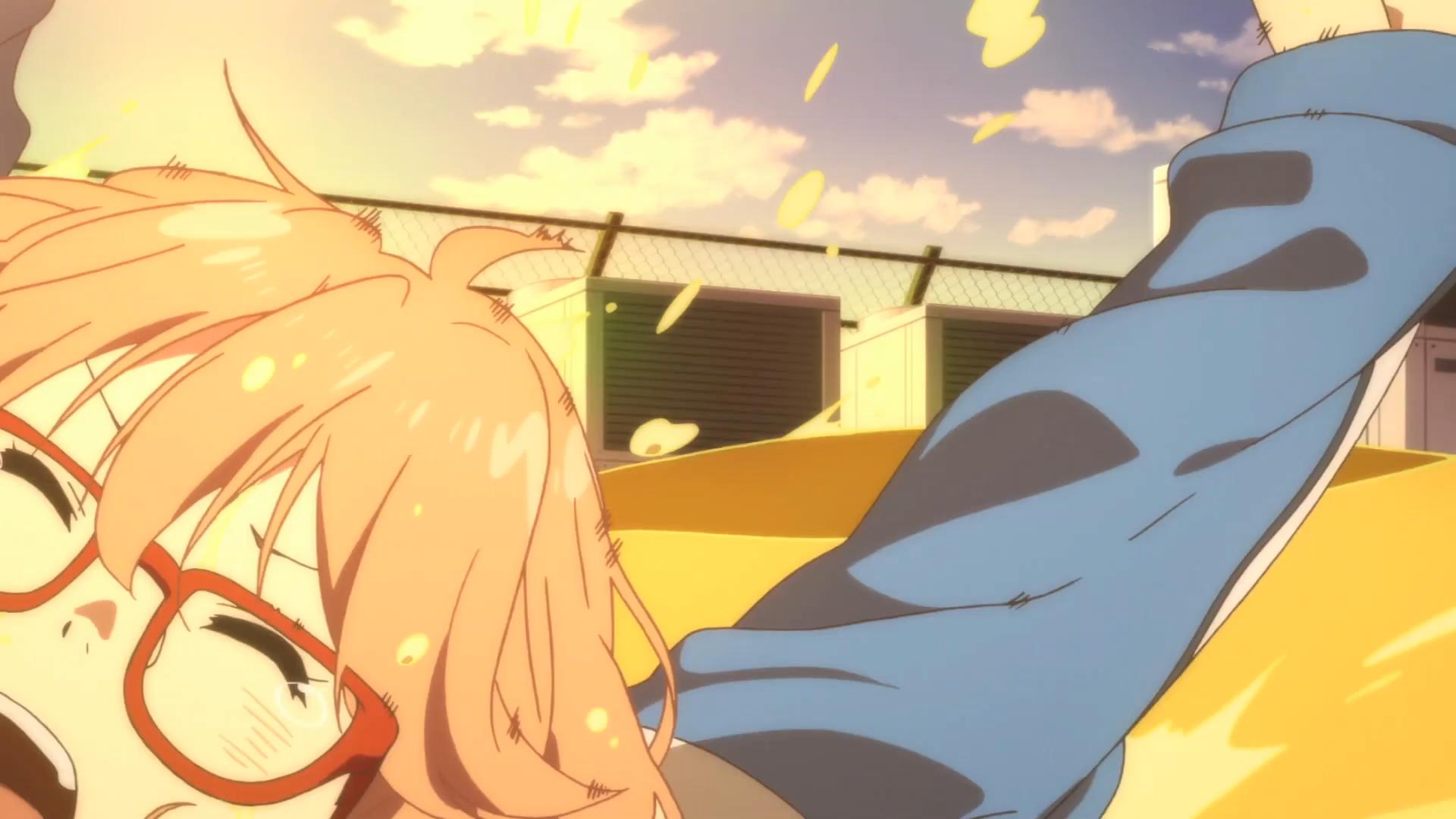
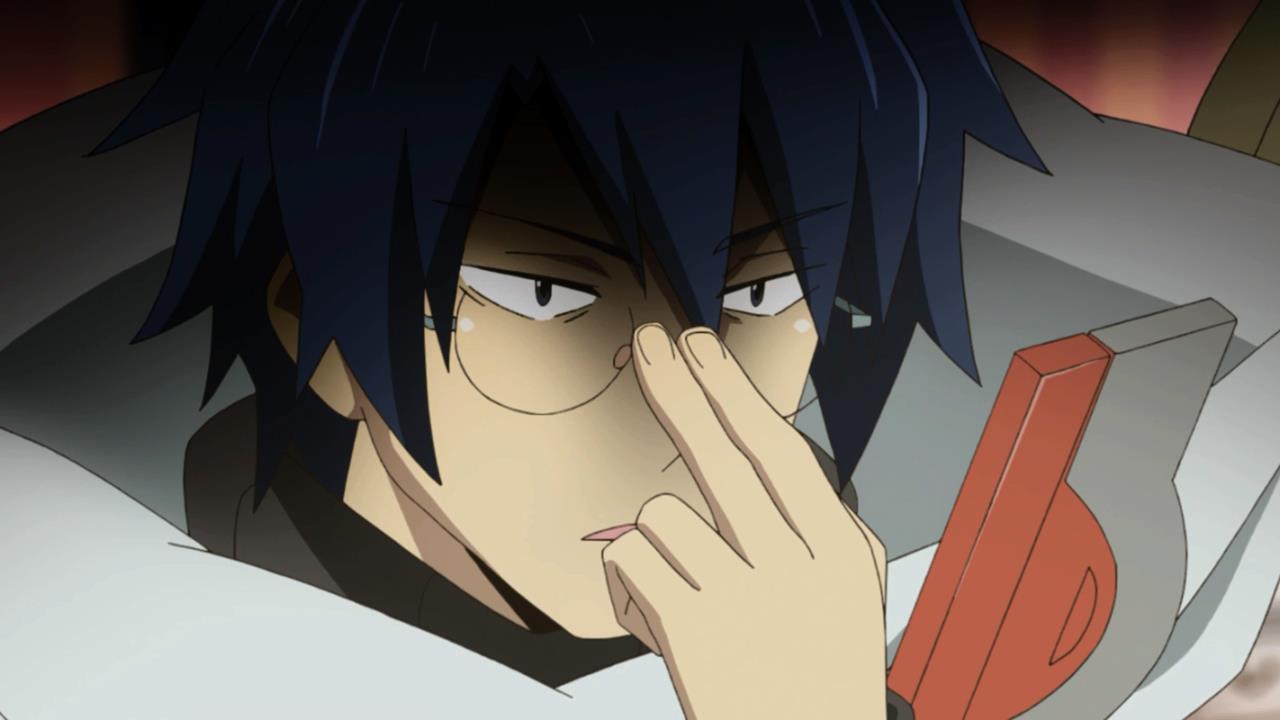
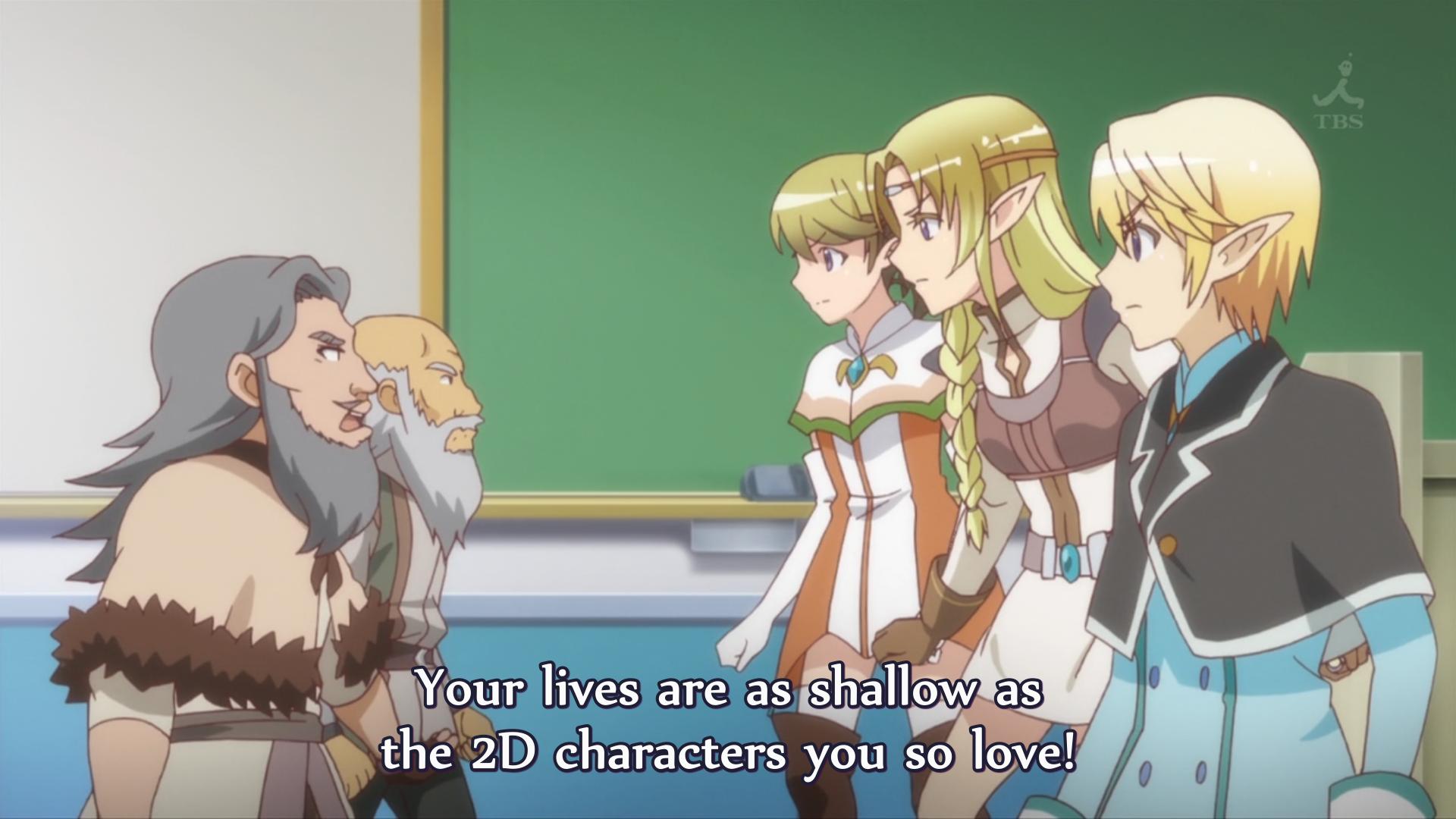
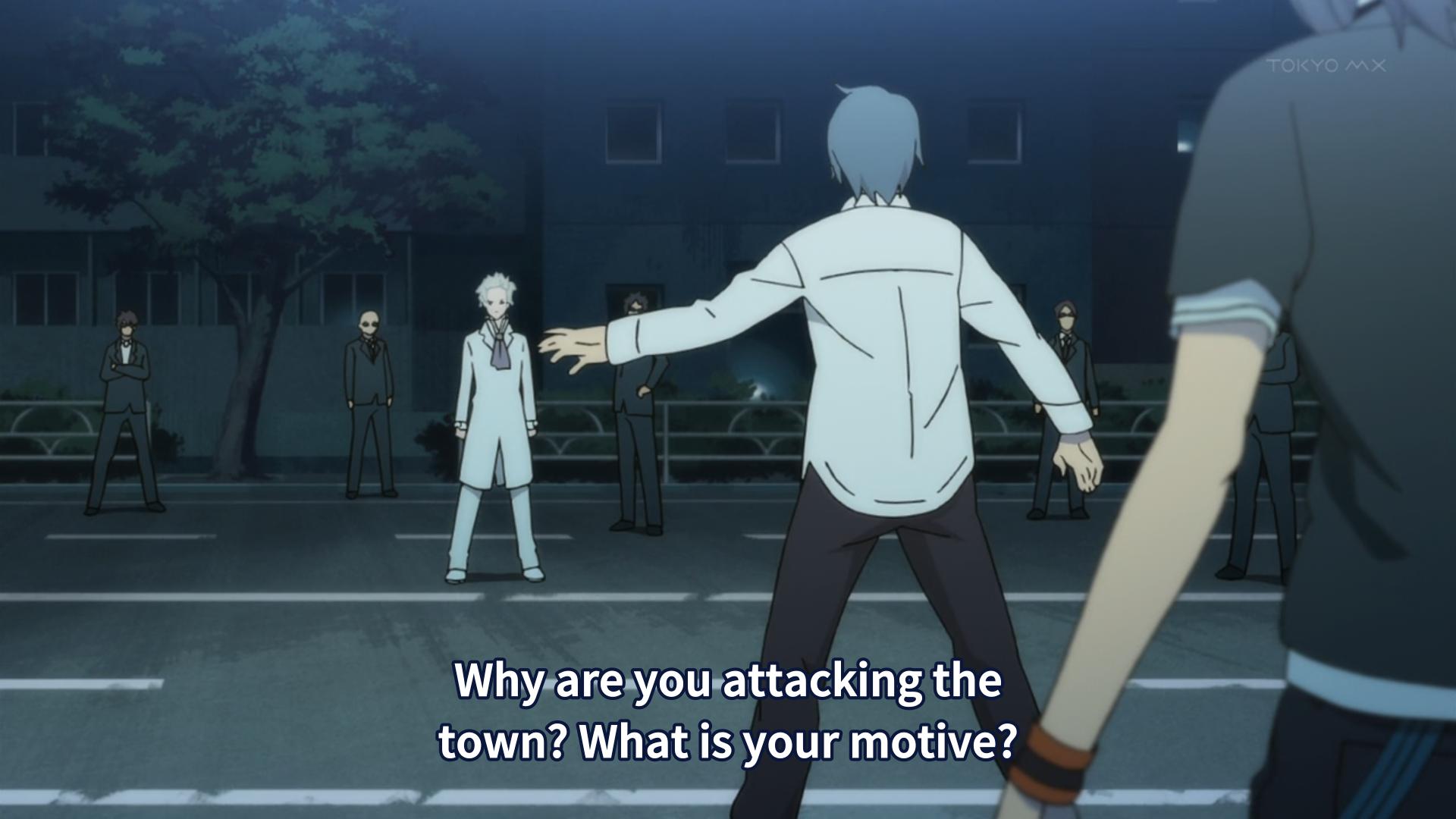
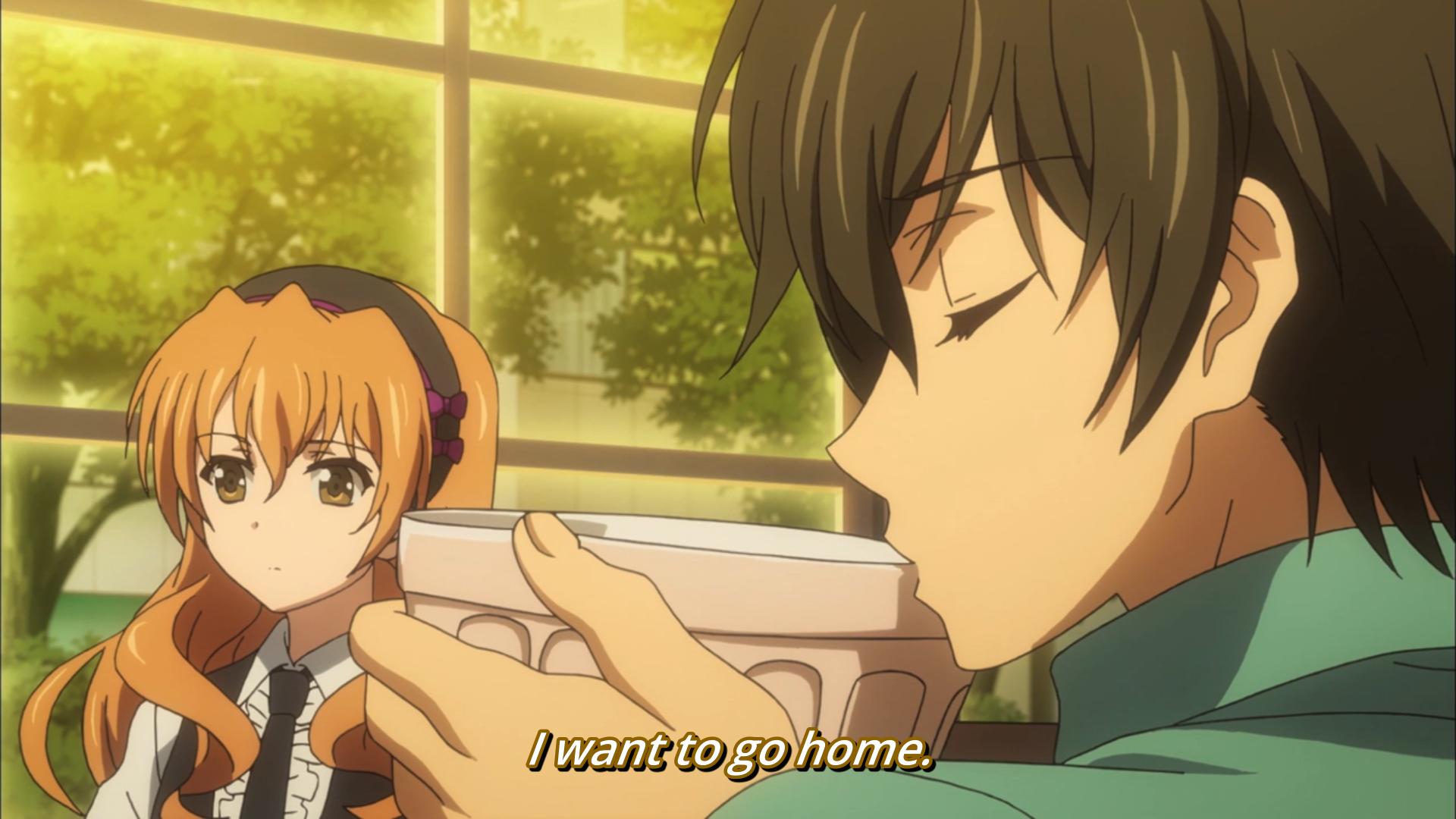
Glad someone else took note of show shoddy the directing is for Golden Time.
It’s kind of remarkable how much energy it drains from the show. It’s a shame.
Some of us took notice and stopped watching somewhere between episodes 1-3…
Agree with you on everything here except for Monogatari (not a fan of Nisio Isin stuff). I like White Album 2 less than you do (I prefer more comedy in my romance stuff) and I think I like Kanata about the same (but I’m not disappointed because after KyoAni’s recent failures, I was just hoping it’d be fun. Plus I’m not big on themes like you), but overall they’re good enough for me to stick with them.
Not watching Nagi personally. I’m more a fan of when Okada tells deep themes in a crazy way like she did with Book of Bantorra. You should check that out sometime. It’s a very underrated show that I think might be up your alley. I like Yozakura as well, but that’s mostly because the style really clicks with me. The writing is dumb shonen shit.
And yeah, there’s a good show in Golden Time somewhere, but goddamn is the direction doing its damndest to ruin that. Maybe the original source material is to blame as well, but I’ve seen anime with bad sources that I’ve liked.
I’ll check out Bantorra at some point. Okada’s done a little bit of everything, so I feel kinda guilty only knowing her through the emotional stuff she tends to get panned for.
I think Golden Time’s best moments are always the ones when the plot actually moves forward – stuff like Mitsuo finally dropping Koko, Banri’s confession, and the stuff in the second half of the most recent episode feels like it’s from an entirely different show than the SoL/comedy nonsense between. Which makes me think it really IS the fault of the adaptation, since I assume these conversations are taken more straight, whereas the normal conversations are condensed to the awful, lifeless versions we see in the show. At least, that’s the impression I’m getting from people who’ve read the source material.
Think you nailed my feelings on KLK as well, it’s hard to believe that it’s really supposed to be about girl’s taking control of their image with the “male gaze” camera views all the time but the show gets everything else right from the pacing to the humor and that’s not easy to pull off!
And after the last week of writing about Kyousogiga for five days I’m out of stuff to say about the show and contribute to any conversations except that it’s right on the top of my list as well. XD
Yeah, the stuff KLK is actually good at, it is reaaally good at. I’m normally not much of an action OR comedy fan, so the fact that an action-comedy is one of my favorites this season says a lot.
I’m kind of astounded this is the first full show being handled by Kyousogiga’s director – in fact, Matsumoto Rie is apparently handling the direction AND the series composition, so this is pretty much Her Project. It’s great to see a new director starting off with a show like this.
Yeah, looking on ANN I can see that she’s directed parts of other shows and some movies (alllll the Precure!) but considering the “original creator” is just the pseudonym used to refer to the Toei staff as a group we can pretty much call it Her Project at this point (and I’d totally forgotten she was a woman too, hurray for more female directors!).
I think we actually have three female directors handling their first full show this season! Her, the director of Meganebu, and… someone else I can’t remember.
Agree for the most part, though I would put Kill la Kill lower (Think its overrated) and haven’t watched any of the Monogatari series, so no comment. Definitely agree with Golden Time. Quite disappointing, but to be fair the sound problem comes from Crunchyroll. Raws and other sub groups are fine.
Good to know. It’s not exactly a show I need to see the moment it’s released, so I guess I’ll just wait for another sub group.
Speaking of Yozakura Quartet, I actually think it’s quite amazing that a show can be so mediocre in every single way. One character may be great while another one is boring, the music and sound effects are great but some of the VAs sound pretty generic. The animation for the action scenes is occasionally impressive but some of the CG cars, or other objects, look bad, some of the ideas are brilliantly batshit crazy while the story is mostly ridiculously bad, etc.
When I eventually revise my entire scoring system(going to try using the entire 1-10 range and not give a fuck about MAL’s associated description for each score), Yozakura Quartet may be one of the shows that provide the basis for the scale together with Love Lab(and maybe some others). Because when you think about it on a linear scale from 1 to 10, a score of 5 fits Yozakura Quartet like a glove. Note, however, that this says nothing about how much I enjoy the show. I just think that as a complete package, it’s currently neither good nor bad.
Yeah, it’s currently hovering around a 5 for me as well, which is about as low as I’ll go before normally dropping something. Not that my scale is really linear – I still consider 5 “better than the average anime” (I’m only watching 11 of this season’s 30-some shows, after all), and have been thinking about pushing even more of what I consider “unwatchably bad” into a smaller set of numbers. It just seems more useful for me for the numbers to evaluate between shows I find actually relevant than to pin down specific degrees of “bad enough I shouldn’t be watching it.”